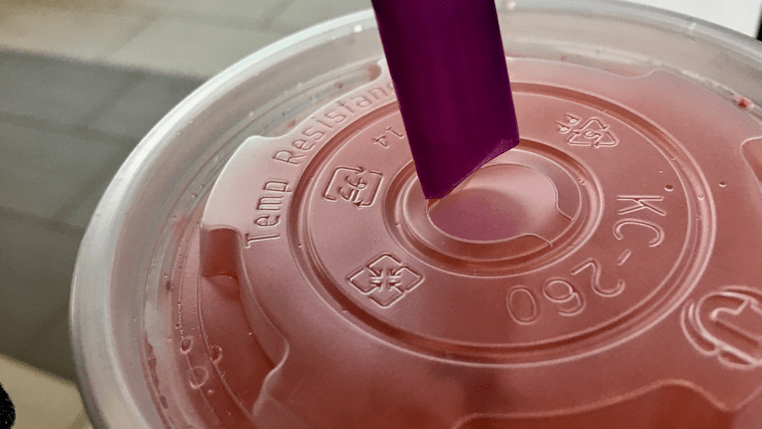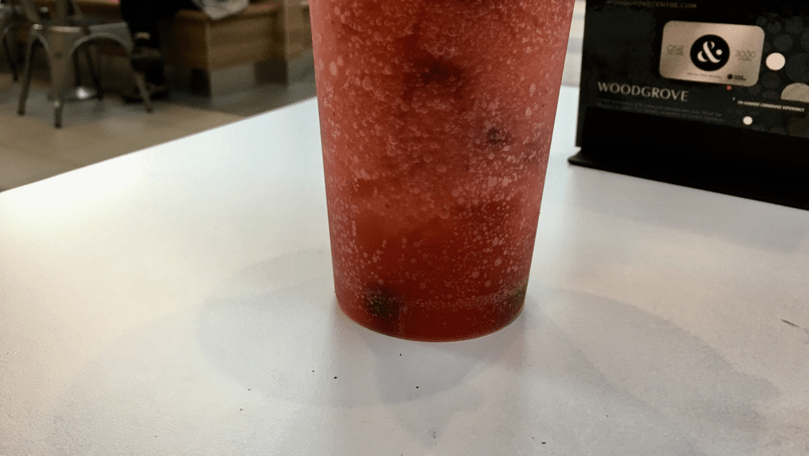I’ll be studying the hegemony theory behind the popularity of bubble tea in the western culture.
Loading Content
If the content is still not loaded after a minute please contact Donald Louch at hello@donaldlouch.ca for further assistance.
If the content is still not loaded after a minute please contact Donald Louch at hello@donaldlouch.ca for further assistance.
Hegemony theory, what is it? Hegemony theory is looking at the results of an item through its active consumption of it. I'll be defining and researching the different elements of bubble tea (as the consumption) that has made bubble tea popular in the western culture (as the results). I’ll further be defining popularity as something that is well-known and well-liked by people in a certain culture, which in this case is the western culture. Bubble tea is popular in our culture from elements such as the history behind it, to the kawaii look and concept, to the title of ‘bubble tea’, and lastly to the effects that the social media presence has had on it. With this, the hegemony theory of bubble tea has made it very popular or dare I say mainstream in western culture.
Before we talk about the history of bubble tea, we should first explain what bubble tea is. Bubble tea is “… a concoction of tea, colourful powdered flavourings and, of course, … the chewy tapioca balls that are slurped up through an oversized straw. The drink [further,] is usually served cold
” as per Nan Xie’s description of bubble tea (Xie, Nan). In other words, bubble tea is a tea with flavours and tapioca balls or pearls (more commonly known as tapioca pearls or simply pearls), which makes the drink colourful. Furthermore, bubble tea:
… [B]rings [you] a glass of sweet, milky iced tea with a number of those scary-looking black tapioca balls sunk in its depths. As you suck the balls up into your mouth, you chew them. They may be flavorless or lightly sweetened, and they're as addictive as their textural soul sisters: Gummi Bears. - (Kessler, John)
Bubble tea can also be made in a variety of different flavours such as almond, coconut, green tea, honeydew, mocha, taro, Thai tea, passion fruit, strawberry, peach, watermelon or mango, and several other flavours that bubble tea could be made with (Weingarten, Abby). You can substitute the base tea with black or green tea, as well as substitute the pearls with different flavors such as coconut or mango flavoured jelly (which looks like a little Jell-O square). The drink is typically served in a clear cup with a plastic sealed lid. A thick straw with a sharp, pointed end is used to drink the tea. The straw is used to puncture the lid, suck the pearls up, and to drink the bubble tea.

Surprisingly, some would be shocked to learn that the tapioca pearls aren’t the “bubble” in bubble tea. As Eat This and Not That states, the “bubble” in “bubble tea” refers to the bubbles at the top of the drink and not the pearls (Tarantino, Olivia). Now that we know what bubble tea is let’s talk about the history of bubble tea.
As the history of bubble tea goes, bubble tea was first invented in the early 1980s (King, Paul) by the Taiwanese Teahouse employee Liu Han-Chieh. The idea of bubble tea aroused for Han-Chieh after her visit to Japan after she saw coffee being served cold as she told Derrick Chang. Han-Chieh further went on and told Chang that, bubble tea came about when she:
[W]as sitting in a staff meeting and had brought with her a typical Taiwanese desert called fen yuan, a sweetened tapioca pudding. Just for fun she poured the tapioca balls into her Assam iced tea and drank it.
[From that point on,] … everyone at the meeting loved the drink and it quickly outsold all of [their] other iced teas. - (Chang, Derrick)
Bubble tea originated in Taiwan and has since then expanded worldwide and is known in communities around the world. With bubble tea the classic recipe for bubble tea, is as follows: Bubble tea originated in Taiwan and has since then expanded worldwide and is known in communities around the world. With bubble tea the classic recipe for bubble tea, is as follows:
1/2 cup (125 mL) chilled, cooked large Chinese tapioca pearls. If substituting small tapioca, use 1/3 cup (75 mL) 1 cup (250 mL) crushed ice 1 cup (250 mL) very strong chilled black tea (or orange pekoe tea or Lychee tea) 1 cup (250 mL) milk, or to taste honey or sugar to taste. - (Klaffke, Pamela)
It’s amazing how delicious a simple recipe like this can be! There is a multitude of different names that bubble tea goes by such as ‘bubble tea slush’, ‘pearl milk tea’, ‘boba milk tea’, ‘boba juice’ or simply ‘boba’ (“Bubble Tea”). With the history of bubble tea, we need to think of the kawaii concept that comes with it.

One may say that bubble tea has a kawaii theme attached to it. You may be asking yourself “what is kawaii?” Kawaii is known as a cute, bubbly, and colourful theme which applies to people, objects, or in this case food and beverages. From the pearls, to the vibrant look, to the sweet taste, and to the positive feelings that you get when drinking the tea, a kawaii theme is established. It’s been thought that the pearls can have a colourful and cute look to them. As odd as that may sound, these “cute” attributes added together create a very pleasant experience. Furthermore, the pearls as stated by Kessler in the above paragraphs have a Gummi Bear like texture to them, which can bring forth nostalgic feelings and allow one to reminisce. It’s also been said that the colouring of the powdered flavouring makes the drink pop in a bright and colourful fashion, as stated by Nan Xie (Xie, Nan). The drink itself is very sweet from all the powders added to it and contains a large amount of sugar. Because of its kawaii nature, bubble tea can make one feel warm and bubbly inside. The name of bubble tea could further be considered to add to the kawaii standard.
The title of “bubble tea” is another reason why it’s so popular. The title is fun, unique, and descriptive. “Bubble tea” can be a fun thing to hear as well as to say. The name of “bubble tea” is extremely unique and no one other known beverage has gone by a name remotely like it. The name is descriptive, succinct and to the point. As stated earlier, bubble tea has a foamy bubble like topping and tapioca pearls in the shape of bubbles. You can look at a picture of bubble tea and immediately identify it due to its characteristic appearance. With a name like bubble tea people can take to social media platforms and post their thoughts and pictures of it.
Social media additionally plays a role in bubble tea’s popularity. As you’ll see in the following table, there’s a lot of people actively posting about bubble tea on different social media platforms. This allows people to post their opinions on the taste and look of bubble tea and can further post pictures about the look the beverage.
Here are the results that I have found when doing a general search for “#BubbleTea”. The following results were captured on: November 26th, 2016 1:50PM (PST).
| Google Search | ||||
|---|---|---|---|---|
| Results | 725, 838 posts | 286 Tweets* | 82, 396 People Talking About It | 7,540,000 Results |
There’s a huge number of people posting about bubble tea. Be it on Instagram, Twitter, Facebook or websites that are being indexed on Google. In saying this, it may entice others to get out and buy a bubble tea for themselves due to its appetizing allure.
In conclusion, bubble tea is a beverage that goes by several different names such as pearl milk, boba milk, or simply boba, it consists of tea, powdered flavours and the iconic tapioca pearls. Bubble tea was invented in a Taiwanese Teahouse in the 1980s when Liu Han-Chieh, added tapioca pearls from her pudding into her tea in a staff meeting. The tea comes in a plastic cup in which allows you to see the colourful tea and the pearls. The popularity of bubble tea is seen worldwide and it comes from its history, the kawaii feelings, the name, and the effect social media has on it. With this information, we can use the hegemony theory to state that bubble tea has become popular from a variety of different factors.
Written by: Donald Louch | Edited by: Mark Dimozantos